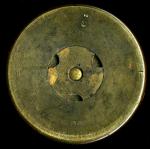-
Posts
2,962 -
Joined
-
Last visited
Content Type
Profiles
Forums
Blogs
Gallery
Events
Store
Everything posted by Chip
-

M1887 Tornisterbeutel
Chip replied to Hoss's topic in Germany: Imperial Uniforms, Headwear, Insignia & Personal Equipment
Eric, I've seen these before, but did not know their purpose. The rod system you mentioned was for the attaching the shoulder braces to the pack, very similar to the Austrian pack system. What reference are you referring to? I looked in Pietsch and he only shows the back of the 1887 pack and mentions nothing about this pouch. I'm familiar with the 1912 Radfahrer Gepäcktasche (I have one) that looks very similar to this one from the front, but utilizes a should brace system similar to the M95 backpack with each strap attached to the pack with a type of metal toggle device. Chip -
Marcin, That's an important difference, but only part of it. Every "L" was different. There are a few that are extremely similar (for instance the Luftschiffer and the Kürassier Rgt. Nr.2 "L"s), but there are slight differences. The following units also have an "L" cypher, I.R.47, 10.b.I.R., Dragoner Rgt.Nr.23. I have even seen a dealer trying to sell a "Luftschiffer" officer's shoulder board with a "T" from the Telegraphentruppen turned upside-down, which sort of looks like an "L".. The last straw is that the majority of officer cyphers have been reproduced and are readily available on some German dealers of reproduction items websites. You can literally get just about anything you want. They are not cheap, but you can get them. That's why it is always prudent to be skeptical of any officer piece until you check it out thoroughly. Chip
-

Skoda Brass
Chip replied to Chris Boonzaier's topic in Germany: Imperial Uniforms, Headwear, Insignia & Personal Equipment
Here's the head stamp on my Austrian mountain gun cartridge case. At the bottom it says, "7,5 cm M15". The manufacturer is Berndorf. Both the case and the fuse are dated 1917. Hope you can see it well enough. Chip -
Andreas, I don't know if those with civilian driver's licenses were just handed a military license. I would think they would have to have training on military vehicles before they could be allowed to drive them. Perhaps some, like the former members of the Kaiserliches Freiwilliges Automobil-Korps got a pass, as they were equivalent to officers and had been driving for the military for some time before they were inducted into the Kraftfahrkorps. Chip
-

Glass Canteen 1918
Chip replied to Hoss's topic in Germany: Imperial Uniforms, Headwear, Insignia & Personal Equipment
Exceptionally, nice! Still looking for my first. I'm running out of time..... -
Hardy, Here are the three types. First, the M1907 leather strap for the black Lederlitewka (from the collection of the Bavarian Army Museum). It was red leather with a black leather underside. The device was a brass wheel with lightening bolts. This was replaced in 1911 with a brass "K" on a black leather strap. In the spring of 1916, the brass "K" was replaced by a red chainstiched letter "K". You can't really date a wartime photo by the brass "K" alone, as the ones already in use in 1916 continued to be worn until the end of the war. Chip
-
I have a few things, including a navy marked Drillich outfit (jacket and trousers), a navy rucksack, a blue cap with tally from the 2.Matrosen Regiment, a white canvas work jumper and some sleeve ratings on gray cotton. I've been looking for an enlisted gray cotton cap for decades, but have never had the chance to get one.
-
Though I typically don't comment on such lovely headgear (I have no expertise), I do very much admire the fine pieces that you show us. Most of these rarities are never seen by the average collector over a lifetime of collecting. Thanks for your efforts to produce such detailed photographs for us all to enjoy. Chip
-
Paul, Regarding shoulder boards, the color of the underlay has nothing to do with the state. The colors, depending on the model, can indicate a corps color, a traditional regimental facing color or a branch color. The state is normally indicated by the color of the darts (Faden) or threads in the cording. Green or green/white would be for Saxony, blue or blue/white for Bavarian and so forth. In the case of the RIR.263 the color of the underlay is red because the unit was formed in the IV.Armee Korps, which had red for the corps color. The color of the darts are black, indicating that the unit is Prussian. Chip
-

New shoulderboards
Chip replied to Marcin L's topic in Germany: Imperial Uniforms, Headwear, Insignia & Personal Equipment
Marcin, That is a nice little grouping! I will try to answer your questions. These shoulder boards could have been worn by any enlisted/NCO rank. There is no distinction. We hesitate to put a model name with these boards, as most were worn for many years, going back to the Franco Prussian War and beyond. If you have to put a name to them, I would call them shoulder boards for the Dunkelblau Waffenrock. Some people call them M1895, as this was the date that the old blue uniforms were replaced with an updated model. The shoulder boards did not have any noticeable changes, however. The black/dark blue shoulder board is from an old pattern 1892 pattern blue/black Litewka. The shoulder boards were of the same material as the Litewka and were without piping. They had yellow numbers or cyphers. These were replaced in 1900, when a new gray Litewka was introduced and which carried shoulder straps in full color as on the Waffenrock. What is the backing material on the white 167 strap? Chip








